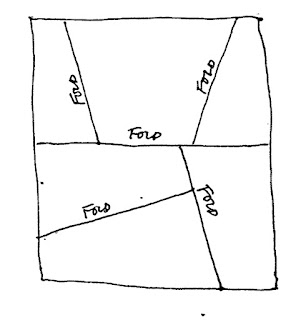To Fold, To Spindle, To Manipulate
We don’t necessarily need AI for art-making, although it can be a new way of transforming and manipulating images. We’ve been doing this with Adobe After Effects for 30 years now. AI is just a continuation of art-making as it has been for millennia. Artists still make paintings, pottery, textiles, works on paper, glass sculpture, metal work, and so on. If you go to large international art exhibitions 1% or less would be using AI as a process. It could be the beginning of a new movement if anything.
The problem with AI art is that the art is separated and is contingent upon the medium in which it is fixed and the types of equipment that makes the marks on the surface. At the current moment, I see it as an evolution of technology rather than an evolution in art. If the works require displays (which will have to be replaced well into the future) how will the work exist in the world?
8/18/2022
[8/18/2024: This was an idea I had for a conceptual piece based on one of the items on Richard Serra’s infinitive Verblist, namely, “To Fold”. As digital art it is ironic because it’s not a medium that can be folded–but nor can a canvas, or a plywood panel, or a piece of corten steel. Digital screen-based media is perhaps superior in the sense that it is more readily visible. Physical objects require more effort for them to be seen because they have to be exhibited in some way. Consider the massive amount of energy to make corten steel works as Serra did, compared to using his same verb list to generate an image that would demonstrate the metaphor.
Some images generated by AI with the prompt: Create an image based on the infinitive "to fold". Origami is obvious, a US flag, ironic.





Comments